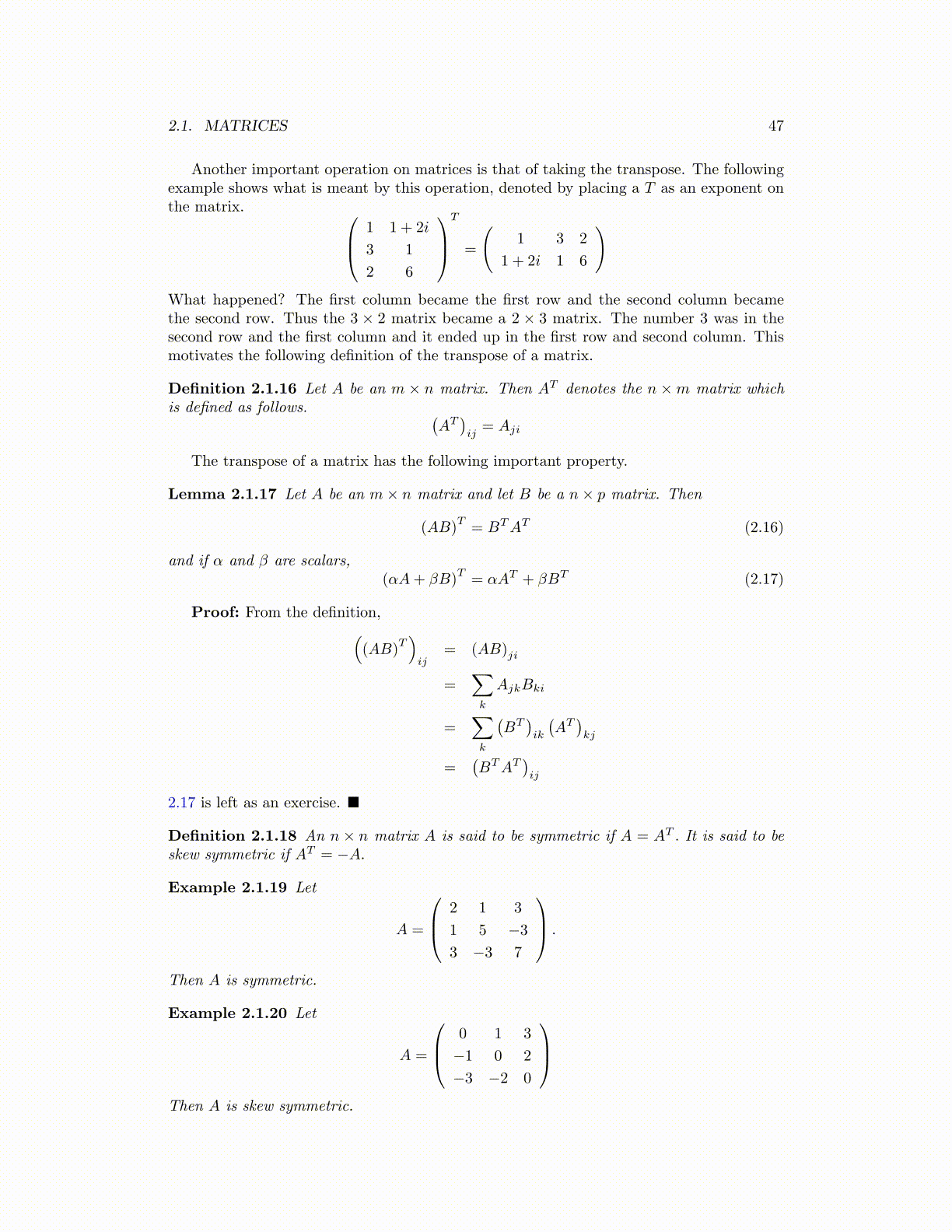
2.1. MATRICES 47
Another important operation on matrices is that of taking the transpose. The followingexample shows what is meant by this operation, denoted by placing a T as an exponent onthe matrix. 1 1 + 2i
3 1
2 6
T
=
(1 3 2
1 + 2i 1 6
)
What happened? The first column became the first row and the second column becamethe second row. Thus the 3 × 2 matrix became a 2 × 3 matrix. The number 3 was in thesecond row and the first column and it ended up in the first row and second column. Thismotivates the following definition of the transpose of a matrix.
Definition 2.1.16 Let A be an m × n matrix. Then AT denotes the n ×m matrix whichis defined as follows. (
AT)ij= Aji
The transpose of a matrix has the following important property.
Lemma 2.1.17 Let A be an m× n matrix and let B be a n× p matrix. Then
(AB)T= BTAT (2.16)
and if α and β are scalars,(αA+ βB)
T= αAT + βBT (2.17)
Proof: From the definition,((AB)
T)ij
= (AB)ji
=∑k
AjkBki
=∑k
(BT)ik
(AT)kj
=(BTAT
)ij
2.17 is left as an exercise. ■
Definition 2.1.18 An n × n matrix A is said to be symmetric if A = AT . It is said to beskew symmetric if AT = −A.
Example 2.1.19 Let
A =
2 1 3
1 5 −3
3 −3 7
.
Then A is symmetric.
Example 2.1.20 Let
A =
0 1 3
−1 0 2
−3 −2 0
Then A is skew symmetric.